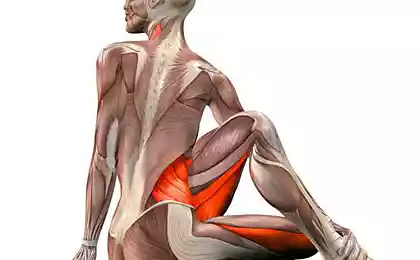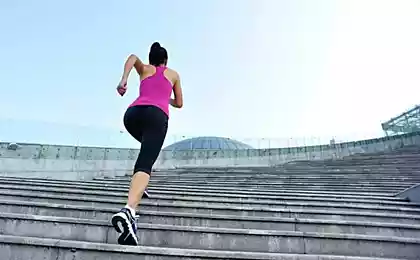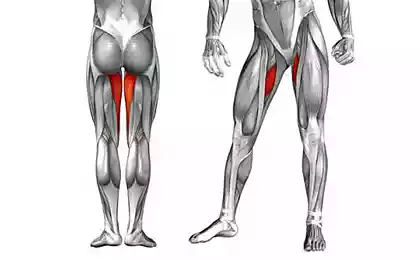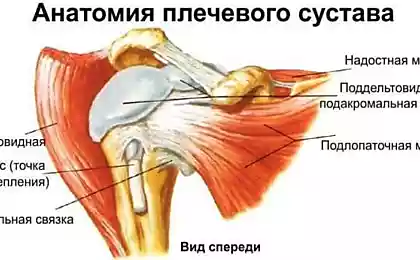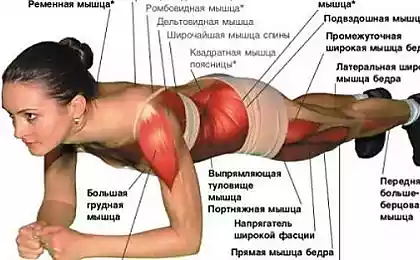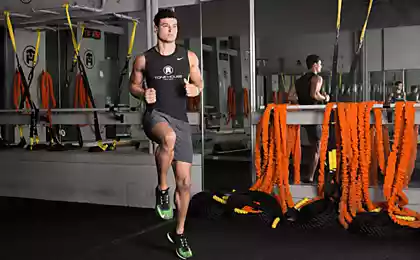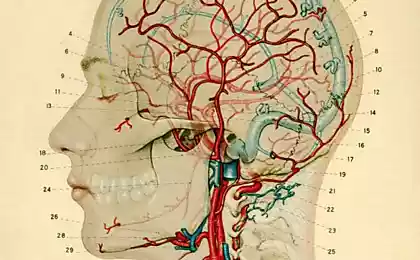6402
Plank: Static exercise for the whole body.

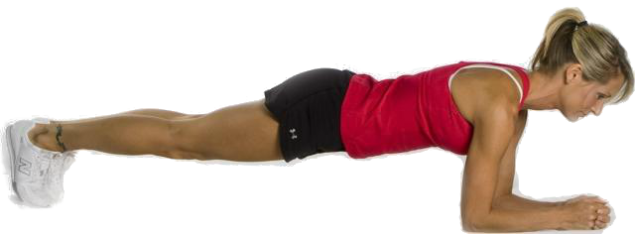
Plank is one of the most popular and effective exercises for the press around the world. The bar makes not only the muscles of the abdomen and shoulder girdle work, but also the muscles of the whole body.
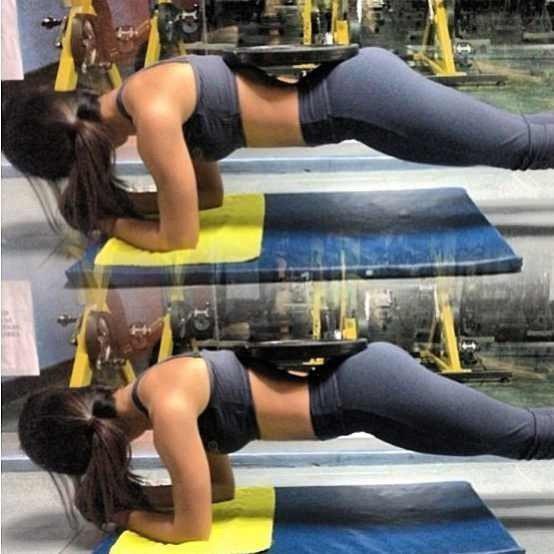
It consists in once a day, as it were, “hang” above the floor for a few minutes, relying only on the hands and arms of the legs. Undoubtedly, being “in limbo”, even for two minutes, is not an easy task. But the result will not be long in coming. After two weeks of regular exercise, you will notice how all the muscles of your body will tighten. The bar is a really high, but nevertheless achievable for everyone result, which can be obtained by applying static exercises to build your own body.
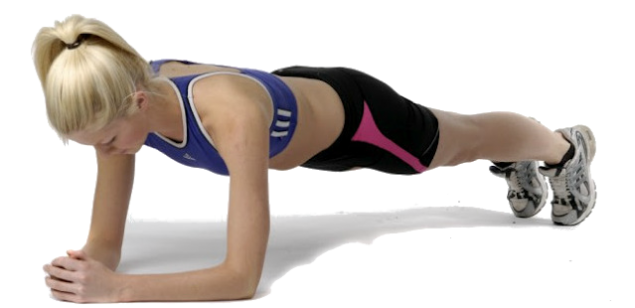
The plank is a static exercise. There is no movement in it, so the most important thing here is to keep the body properly.
How to do: Lie on the floor with your stomach down. Bend your hands at your elbows 90 degrees and go point-blank while lying on your elbows (see photo). The body should make a straight line from the top of the head to the heels of the legs.
Rely only on your forearms and toes. The elbows are directly under the shoulders.
Keep the body as smoothly as possible, strain the abdominal muscles and do not relax. Try not to bend your hips down to the floor.
1. Feet. Bet together: keeping balance will become more difficult, which will increase the load on the abdominal muscles.
2. Legs. They should be straight and tense, otherwise the load on the direct abdominal muscle that keeps the lumbar region from deflections will also decrease.
3. Buttocks. Tighten up. Do not let go of tension until the end of the approach. The contraction of the gluteal muscles increases the activation of all the muscles of the cortex.
4. The lumbar. The hardest part! With proper execution of the bar, the lumbar spine should be flat. That is, the lower back cannot be rounded or bent. Imagine that your back is tightly pressed against the wall.
5. Belly. Then pull in, and then try to pull in the ribs. Throughout the approach, keep your stomach in this position, but do not hold your breath.
6. Elbows. In order not to create an unnecessary load on the shoulders, place the elbows strictly under the shoulder joints.
Exercise should be performed on exhalation, and hold - until moderate tension in the muscles. Hold this position as long as possible: it is enough to hold out for 10 seconds. As a rule, people with different preparedness keep the bar pose from 10 seconds to 2 minutes. Ideally, keep your body stationary for as long as possible – this is how you use your muscles to the maximum, but if you are a beginner, do not try to break the record: start with the smallest.
Tip: If you do the foreground exercise for the first time, first last 10 seconds, next time 20 seconds, then 30 seconds and eventually up to 1 minute. A good result is 2 minutes, but if you perform 3 sets, then last 1 minute.

So, the bar is a static exercise to strengthen the abdominal muscles, as well as the legs and back. All types of this technique are based on the principle of statics (no movement), and the main emphasis is on muscle load and fixed body position throughout the lesson. This bar crosses something with yoga. That is why the effect is possible only with a clear implementation of all recommendations.
The capricious fashion, which dictates its conditions to us in all spheres of life, in relation to the passion for a set of strap exercises, causes only a positive response. Static exercises on the press are not new in sports, but not all novelties are so useful and effective in application. So what is a “plank” and why do you do it?
Exercise bar is very well suited for warming up before performing strength exercises, as well as those who are interested in the idea of working out in training the muscles of the cortex (responsible for supporting the pelvis, hips and spine) without twisting.
The essence of the plank exercise is to once a day, as it were, “hang” above the floor for a few minutes, relying only on the hands and arms of the legs. Undoubtedly, being “in limbo”, even for two minutes, is not an easy task. But the result will not be long in coming. After two weeks of regular exercise, you will notice how all the muscles of your body will tighten.
To train and strengthen these basic muscles without traditional exercises with lifting the legs and body – this is the difference between the bar and dynamic training.
The main task of the slats is to keep the body in an even tense position - to strengthen the muscles that stabilize the body. These include oblique abdominal muscles, transverse and straight muscles leading, small and medium gluteal, muscles of the posterior surface of the thigh, beak-shoulder and others.
Are you saying the lack of dynamics is difficult? But experts and athletes agree that if you perform this exercise according to all the rules, then the result will meet all expectations, and if it turned out that you are really good at the technique of exercise and strong enough to doze off during the two-minute approach, then it is time to raise the stakes. Fortunately, there are many options for performing the bar, increasing the level of complexity. But first, let’s take a look at what the real bar should look like.
It is important to learn how to correctly perform the basic frontal bar, and only after that to move to complicated options, because it is compliance with the fundamental rules that makes this exercise so effective. If done systematically and correctly, it will give you strength that will help you make noticeable progress in basic exercises. On the other hand, if performed incorrectly, you risk aggravating lower back problems without the slightest benefit to the abdominal muscles. So the choice is yours!
How do muscles work, and what happens in them when performing static exercises?
Most of the work is done by red muscle fibers, or as they are called slow, if the work is done at half strength or less. They are called red because they contain more myoglobin than white, it is myoglobin that gives them a more red hue.
Of course, it is impossible not to note such a big plus of static exercises as the fact that they can be performed almost everywhere, in any conditions. They do not require any additional equipment. Of course, if you perform a static load in a well-equipped room, you can increase the efficiency of execution by adding additional equipment.
Basic bar

Regularly performing the bars, you can get a steel press or just tighten the body at home. Strip exercise can also be recommended as a therapeutic exercise to strengthen the back muscles. There are no movements in it, so the main thing is to keep the body correctly: the pelvis is slightly twisted forward, the back is straight, the body from the top to the heels is stretched in a line.
Lie down on the floor with your stomach down. Bend your arms at your elbows 90 degrees and go point-blank on your elbows. The body should make a straight line from the top of the head to the heels of the legs.
Rely only on your forearms and toes. The elbows are directly under the shoulders.
Keep the body as smoothly as possible, strain the abdominal muscles and do not relax. Try not to bend your hips down to the floor.
If you are in the right position, move on to the exercise itself.
1. Feet. Bet together: keeping balance will become more difficult, which will increase the load on the abdominal muscles.
2. Legs. They should be straight and tense, otherwise the load on the direct abdominal muscle that keeps the lumbar region from deflections will also decrease.
3. Buttocks. Tighten up. Do not let go of tension until the end of the approach. The contraction of the gluteal muscles increases the activation of all the muscles of the cortex.
4. The lumbar. The hardest part! With proper execution of the bar, the lumbar spine should be flat. That is, the lower back cannot be rounded or bent. Imagine that your back is tightly pressed against the wall.
5. Belly. Then pull in, and then try to pull in the ribs. Throughout the approach, keep your stomach in this position, but do not hold your breath.
6. Elbows. In order not to create an unnecessary load on the shoulders, place the elbows strictly under the shoulder joints.
For beginners in this position, you need to last about 10 seconds.
To increase the load, the elbows can be moved slightly forward.
For those who have already mastered this stage of the bar, there are options. It is worth going to complications if you can hold the bar for 45-60 seconds without trembling in the knees and dissatisfied snoring. Of course, if that's what you want. As in the case of the classic bar, complicated options do not require additional adaptations – you only need your own body and iron willpower. At first, they will seem to you terribly exhausting, but the development of these techniques will work out the muscles of the middle part of the body along and across.
Varieties of the bar
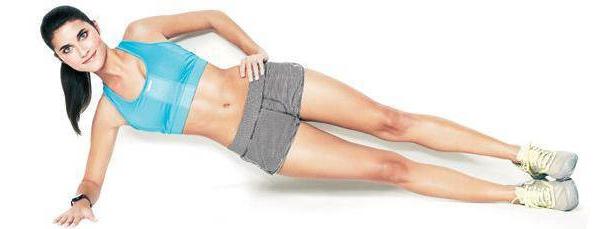
1. Side bar - includes oblique abdominal muscles. It is performed from the lying position on the side. Emphasis is placed on the bent forearm and feet. The body is flat diagonal. The muscles are all tense, the stomach is drawn in. It is considered the most difficult of all types and is not recommended for beginners to perform. A forearm and one leg are used as a support. The second leg is raised up, as is the free hand. At the same time, the body and support leg make a strict diagonal.
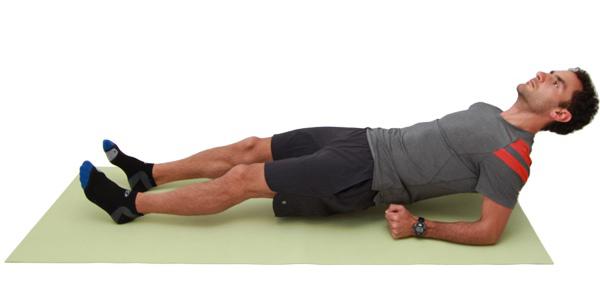
2. Inverted bar - the entire posterior group of muscles of the cortex works. A mirror image of the classical position.

3. Flat with raised leg - the front chain of the cortex is included and the front muscles of the thigh are tense, depending on the posture. It is considered more effective than basic exercise, since reducing the area of support significantly increases the load on all muscles and primarily on the abdominal muscles. When the stand is carried out on one hand, the second stretches forward. If one leg is removed from the stop, then it should be raised slightly above the shoulder. It is mandatory to strictly observe the standard rules - the arm (leg) is straightened, the muscles are as tense as possible, the body is located in a straight line.
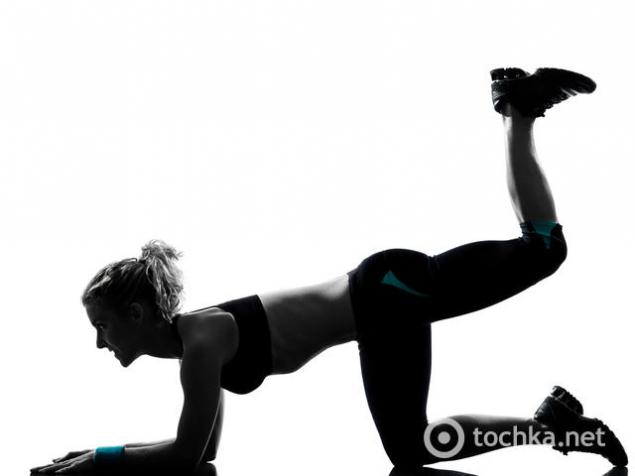
4. The bar on the straight hands - the back muscles work. As the name implies, the emphasis in this exercise is not on the forearms, but on straight hands. When performing it is very important to pay attention to the following points: the hands are located in relation to the wrist at right angles and are strictly under the shoulders. Body stretched in a straight line, press tense, lumbar straightened, buttocks compressed.

5. The bar on fitball. It allows you to increase the multifunctionality of the exercise, adding to the work of the muscles the development of a sense of balance. The main difficulty is not to retract shoulders when balancing the ball. Otherwise, the requirements are normal. It is worth noting that the ball can be used as a support for the hands, and for the location of the legs on it.
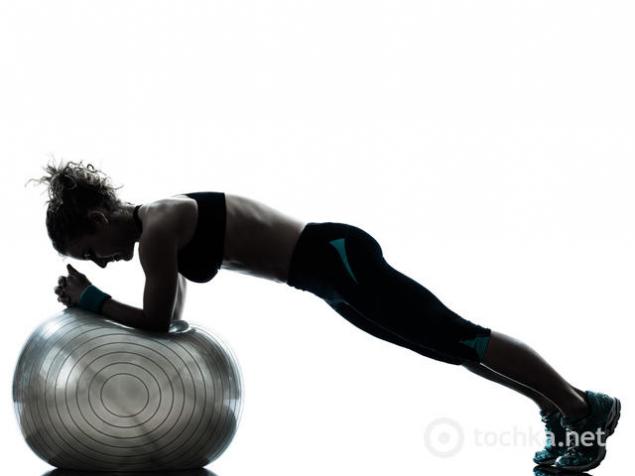

If you approach the process even more creatively, you can easily come up with another way to raise the difficulty level and add instability to the exercise. And perhaps the new reception will be the best thing you’ve ever done for your abdominal abs!
Numerous variations of the bar allow you to work on yourself constantly. Some experts recommend a bar for morning rise. Wake up - stretched, allocated a couple of minutes to perform the stand, and excellent working mood plus a charge of cheerfulness is provided to you.
Exercise is a universal solution for all who are looking for their way to beauty and health. If you are working on your body and know many ways to strengthen muscles and create a beautiful figure, then the strap exercises will effectively help in this.


